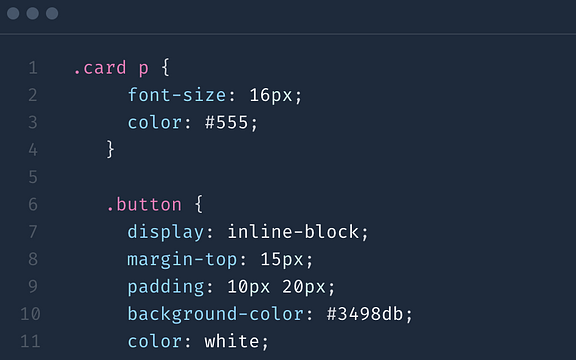Free course for beginners
CSS Course
Cascading Style Sheets (CSS) allow you to lay out web pages according to given rules. Text styles, block layouts, and animations are all specified via Cascading Style Sheets
Where is CSS used?
CSS is a powerful and flexible styling language used to design web pages and user interfaces. With it, you can create beautiful and responsive websites, add animations and effects, and build user-friendly interfaces. CSS is easy to learn, in high demand in web development, and when combined with HTML and JavaScript, it opens up vast career opportunities in IT

What will you learn in the "CSS" course?
You’ll learn the basic syntax of CSS — a fundamental skill that allows you to style web pages and control their appearance. After the course, you’ll be able to apply styles to text, blocks, and elements, adjust their size, spacing, and color, and arrange elements on the page using Flexbox
Join 74,761 students who have successfully completed courses
Start LearningLearning program
How the training is organised
Convenient format
Practice in the browser
AI assistance without limits
Try a demo lesson without signing up. Practice included
Sorting out the questions
How does the "CSS" course help in a career?
Knowledge of CSS is essential for anyone who wants to work in frontend development, web design, or layout. It is a fundamental skill without which it’s impossible to create a website interface. By mastering CSS, you’ll be able to create responsive layouts, style elements, and collaborate with developers and designers. These skills are in high demand in the digital sector, IT, and creative industries
Why choose CSS?
CSS is an indispensable tool for styling web pages. It is easy to learn and allows you to create beautiful, responsive, and user-friendly interfaces. CSS is used everywhere, from landing pages and e-commerce sites to large web applications. It integrates easily with HTML and JavaScript, and learning it is a necessary step on the way to becoming a frontend developer. Even basic knowledge of CSS can produce visible results when working on the visual aspects of websites.
What to do after completing the "CSS" course?
After completing the course, you’ll be able to confidently apply styles to web pages, work with fonts, colors, blocks, and grids. The next step will be learning modern tools like Flexbox and Grid, as well as transitioning to responsive layouts and animations. This will allow you to create professional mockups and, later, move on to studying JavaScript to build complete interfaces.
Is a certificate provided at the end of the course?
No certificate is issued, but you will gain practical knowledge that will enable you to independently create and style web pages. You’ll learn how to work with styles, understand hierarchy and inheritance, use classes, media queries, and other basic CSS tools. This will be an important step in your development as a developer or designer.
How quickly can you master CSS from scratch?
You can learn the basics of CSS in one to two weeks with regular practice. It’s an intuitive language, and the first results are visible immediately, making the learning process particularly motivating. To work confidently with layouts, responsive design, and complex styles, you will need a bit more time, but the initial steps are easy to take.
What knowledge is needed before starting the CSS course?
It will be helpful to know the basics of HTML, as styles are applied to HTML elements. However, if you are just starting out, that’s not a problem — the course is suitable for complete beginners. All topics are explained step-by-step, with examples and exercises, so you’ll quickly understand how CSS works and how to apply it in practice.
Can you study CSS without knowing HTML and JavaScript?
You can start learning CSS without knowing JavaScript, but not without HTML. HTML and CSS work together: HTML defines the structure of a page, and CSS defines its appearance. It’s best to learn them in parallel so you can immediately see how the structure and styles interact with each other.
Can CSS be used for mobile application development?
CSS is not used for creating native mobile applications, but it is widely applied in the development of responsive websites and web applications that work well on mobile devices. Additionally, CSS is used in hybrid technologies, where web code runs within a mobile application. This makes CSS an important tool when creating cross-platform interfaces.
Sign up and start learning. For free. Forever